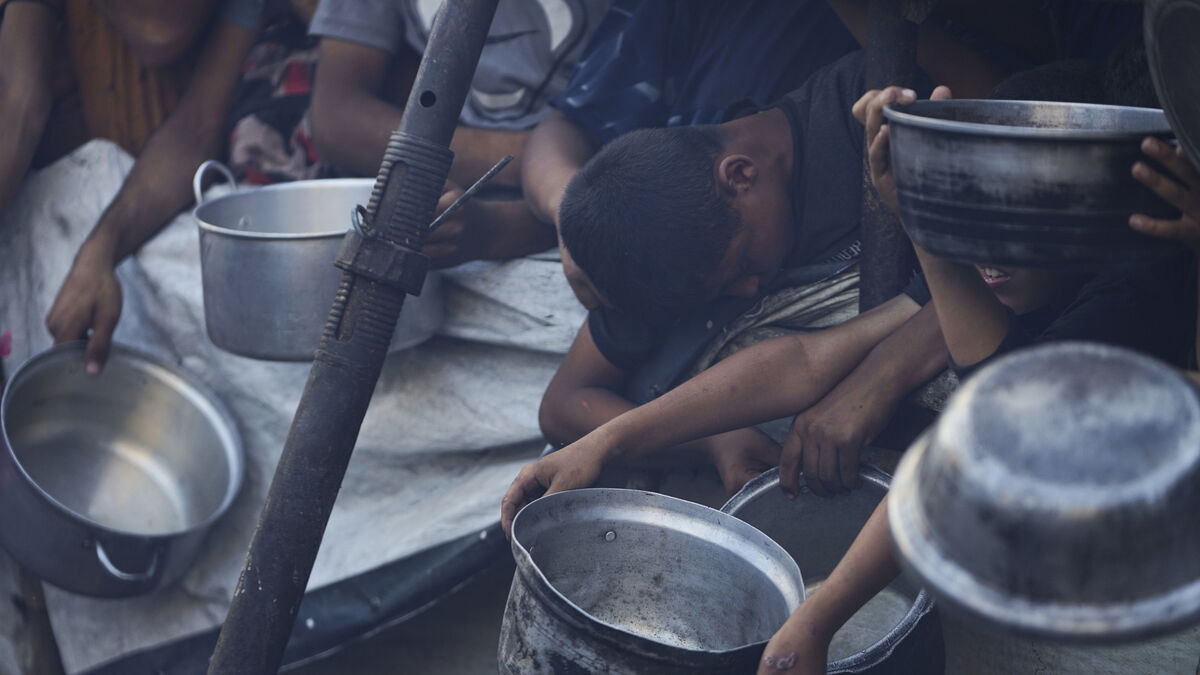Rising Malnutrition Rates in Gaza
The United Nations has reported a significant increase in malnutrition rates among children in the Gaza Strip, with the rate doubling since Israel imposed strict restrictions on food imports in March. This alarming development has been exacerbated by ongoing conflict and the disruption of aid supplies. The situation has become increasingly dire as the number of people suffering from hunger continues to rise.
Since Israel resumed its military operations in March after breaking a ceasefire, it has blocked all food and essential supplies from entering Gaza. This move was intended to pressure Hamas to release hostages. Although there was a slight relaxation of the blockade in late May, allowing limited aid into the region, the impact has been minimal.
UNRWA, the primary UN agency responsible for providing assistance to Palestinians in Gaza, has conducted screenings at its clinics and found that 10.2% of children under five were acutely malnourished in June. This is a stark increase from the 5.5% recorded in March. The agency screened nearly 16,000 children in June, compared to 15,000 in March, highlighting the growing crisis.
New Strikes and Casualties
Recent Israeli airstrikes have resulted in numerous casualties, including several families. One strike in the northern Shati refugee camp killed a 68-year-old Hamas member of the Palestinian legislature, along with a man, a woman, and their six children who were sheltering in the same building. According to officials from the heavily damaged Shifa Hospital, the casualties were taken there for treatment.
Another deadly strike targeted a house in Gaza City’s Tel al-Hawa district, killing 19 members of a single family, including eight women and six children. A separate strike on a tent housing displaced people in the same area claimed the lives of a man, a woman, and their two children. The Israeli military has not issued any immediate comments regarding these strikes.
Gaza’s Health Ministry reported that over the past 24 hours, 93 bodies of those killed in Israeli strikes had been brought to hospitals, along with 278 wounded. While the exact number of women and children among the dead remains unspecified, the toll on the civilian population is evident.
Escalating Food Shortages
The situation has worsened as malnutrition rates continue to climb. Unicef, which conducts its own screenings separately from UNRWA, has also documented a sharp increase in malnutrition cases. In June, its clinics recorded 5,870 cases of malnutrition among children, marking the fourth consecutive month of increases. This is more than double the 2,000 cases documented in February.
Experts have long warned of the potential for famine in Gaza, particularly following Israel’s tightening of the blockade in March. Despite a slight easing of restrictions in May, the number of trucks carrying supplies has remained far below what the UN deems necessary to sustain the population. According to Cogat, the Israeli military agency responsible for coordinating aid, an average of 69 trucks per day have entered Gaza since May. This is significantly lower than the hundreds needed daily to meet the population’s needs.
Aid Distribution Challenges
The UN has faced significant challenges in distributing aid due to Israeli military restrictions on its movements and the breakdown of law and order in the region. Additionally, Israel has allowed an American contractor, the Gaza Humanitarian Foundation (GHF), to distribute food. GHF has provided food boxes equivalent to over 70 million meals since late May through four centers in southern and central Gaza.
However, the process has been fraught with danger. Witnesses report that Israeli forces have opened fire with live ammunition to control crowds on the roads leading to GHF centers, which are located in military-controlled zones. The military claims it fires warning shots at individuals it believes are approaching its forces suspiciously. GHF, however, states that no shootings have occurred near its distribution sites.
No Breakthrough in Ceasefire Efforts
Efforts to secure a ceasefire and hostage release have seen little progress. Following talks between US President Donald Trump and Israeli Prime Minister Benjamin Netanyahu last week, there was no indication of a breakthrough in negotiations. Israel has continued its military operations, resulting in the deaths of over 58,400 Palestinians and wounding more than 139,000 others since Hamas’ attack on October 7, 2023. Approximately half of the dead are women and children, according to the Health Ministry.
Israel has vowed to dismantle Hamas following the attack, during which militants killed around 1,200 people, mostly civilians, and abducted 251 others. As of now, 50 hostages remain in captivity, with fewer than half believed to be alive.







